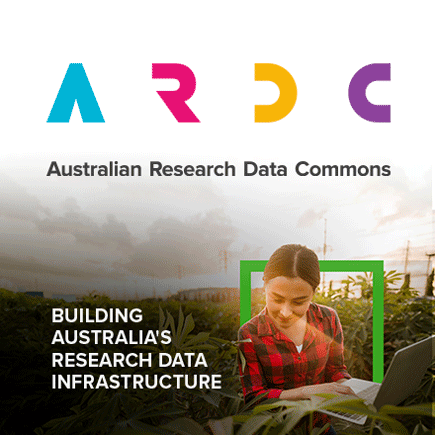Brief description
The Sentinel-2 seasonal fractional ground cover product shows the proportion of bare ground, green and non-green ground cover and is derived directly from the Sentinel-2 seasonal fractional cover product, also produced by Queensland's Remote Sensing Centre. The seasonal fractional cover product is a spatially explicit raster product, which predicts vegetation cover at medium resolution (10 m per-pixel) for each 3-month calendar season. However, the seasonal fractional cover product does not distinguish tree and mid-level woody foliage and branch cover from green and dry ground cover. As a result, in areas with even minimal tree cover (>15%), estimates of ground cover become uncertain. With the development of the fractional cover time-series, it has become possible to derive an estimate of ‘persistent green’ based on time-series analysis. The persistent green vegetation product provides an estimate of the vertically-projected green-vegetation fraction where vegetation is deemed to persist over time. These areas are nominally woody vegetation. This separation of the 'persistent green' from the fractional cover product, allows for the adjustment of the underlying spectral signature of the fractional cover image and the creation of a resulting 'true' ground cover estimate for each season. The estimates of cover are restricted to areas of <60% woody vegetation. Currently, the persistent green product has only been produced at 30 m pixel resolution based on Landsat imagery, resulting in this Sentinel-2 seasonal ground cover product having a medium 30 m pixel resolution also. This is an experimental product which has not been fully validated. This product is similar to the Seasonal ground cover - Landsat, JRSRP algorithm Version 3.0, Australia Coverage which is based on a different satellite sensor.Lineage
Landsat surface reflectance data > multiple single-date Sentinel-2 fractional cover datasets > Sentinel-2 seasonal composite of fractional cover > Landsat seasonal persistent green > Sentinel-2 seasonal ground cover.Data Creation
To produce the ground cover product, the fractional cover product is adjusted using an estimate of the proportion of the pixel obscured by mid and over-storey foliage. We obtain this estimate of mid and over-storey vegetation by combining the persistent dry and persistent green layers. The persistent dry is an estimate derived from field data relationships, while the persistent green is calculated based on time-series analysis. By effectively estimating and then removing the mid and over-storey foliage from the pixel, we can estimate ground cover for that pixel. This estimate is based on the proportion of ground that was visible by the satellite. We assume that fractional cover fractions in each vegetation layer are independent, that is that the presence of mid and over-storey vegetation does not influence the distribution of the ground cover fractions.
Fractional Cover: Land cover fractions representing the proportions of green, non-green and bare cover are estimated for each Landsat image within the season, using the JRSRP Fractional Cover 3.0 multi layer perceptron model. The individual date fractional cover images are then composited into representative seasonal images, using the method described in Flood, 2013. The benefits of compositing in this manner are the creation of a regular time-series capturing seasonal variability, and the minimisation of missing data and contamination present in single date imagery (Flood, 2013). Further details of the product can be found on the seasonal fractional cover product page.
Persistent Green: The persistent green model estimates persistent green by investigating the long term green fraction of the fractional cover product and determining the minimum green that is present regardless of seasonality. This component is assumed to be associated with perennial vegetation and therefore ‘persistent’. Persistent green images can only be created retrospectively, so ground cover images within the last two years are created using the most recent persistent green. These images are tagged ‘_vinterim’ to indicate they will eventually be replaced, when the persistent green later for the corresponding season becomes available. It is expected that the interim images will be almost identical in nature to the final products when they become available.
Persistent Green Note: This Sentinel-2 seasonal ground cover product has been produced using the 30 m pixel Landsat-based persistent green layer.
Data Storage: A 3 band (byte) image is produced: band 1 - bare ground fraction (in percent). band 2 - green vegetation fraction (in percent). band 3 - non-green vegetation fraction (in percent).
Notes
CreditWe at TERN acknowledge the Traditional Owners and Custodians throughout Australia, New Zealand and all nations. We honour their profound connections to land, water, biodiversity and culture and pay our respects to their Elders past, present and emerging.
This dataset was produced by the Joint Remote Sensing Research Program using data sourced from the European Space Agency (ESA) Copernicus Sentinel Program and the US Geological Survey.
This product captures variability in ground cover at seasonal (ie three-monthly) time scales, forming a consistent time series from 2017 - present. It is useful for investigating inter-annual changes in ground cover and analysing regional comparisons. The green and non-green fractions may include a mix of woody and non-woody vegetation. For applications that focus on all vegetation, the fractional cover product may be more suitable. For applications that require a longer timeseries, the Landsat seasonal ground cover product may be more suitable. For applications investigating rapid change during a season, monthly composites or single-date (available on request) fractional cover products may be more appropriate.
This product is based upon the JRSRP Fractional Cover 3.0 algorithm.
Created: 2022-01-01
Issued: 2024-09-24
Modified: 2024-09-24
Data time period: 2016-06-01
text: Queensland.
User Contributed Tags
Login to tag this record with meaningful keywords to make it easier to discover
- URI : geonetwork.tern.org.au/geonetwork/srv/eng/catalog.search#/metadata/ccda88d8-b1f0-4f16-933e-7a6607b420a6

- global : ccda88d8-b1f0-4f16-933e-7a6607b420a6


